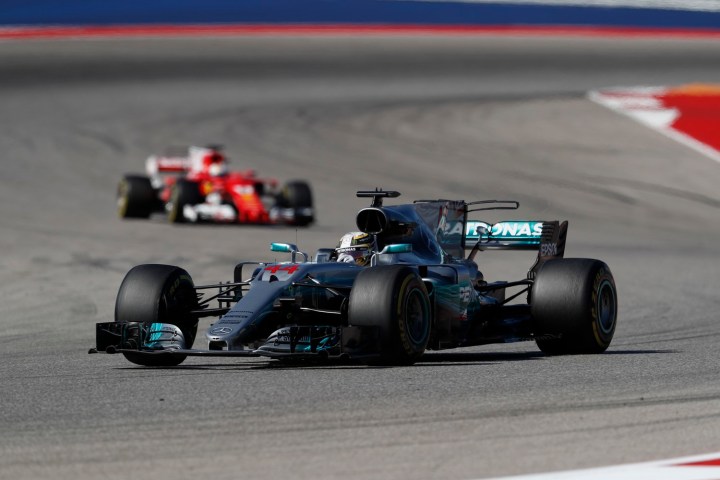
Formula One awards championships for both constructors (the teams) and drivers, and the drivers’ championship is still up for grabs as the season heads into its final three races. Mercedes driver Lewis Hamilton extended his lead by winning in Austin, but his main rival, Ferrari’s Sebastian Vettel, finished second, giving him enough points to stay in the fight.
Hamilton started strong, setting a track record and taking pole position in qualifying. But Vettel managed to pass the British driver shortly after the start of the race. Vettel’s challenge only lasted six laps, though, at which point Hamilton took the lead and held onto it. Vettel fell further down the field, but managed to claw his way back to second by the end of the race.
Controversy surrounded the third spot on the podium. Red Bull Racing’s Max Verstappen (who started in 16th place), passed Ferrari’s Kimi Raikkonen on the last lap to take third place, but the the move was deemed illegal and Verstappen was hit with a five-second penalty. That awarded third place to Raikkonen.
Race stewards claimed Verstappen drove off the track while making his move, a decision Red Bull disputes. The penalty has also attracted criticism from outside the team. F1 legend and Mercedes team advisor Niki Lauda called it “the worst I’ve ever seen” in an interview with Racer.
While the outcomes of individual races are always unpredictable, Mercedes was always the team to beat. The German automaker has held a major advantage since current rules requiring hybrid powertrains were introduced in 2014. Mercedes has won the constructors’ championship for the past three years in a row, and has monopolized the drivers’ championship as well. Hamilton won it in 2014 and 2015, while Nico Rosberg won in 2016, and retired shortly after.
Mercedes hasn’t had as tight a stranglehold on the championship this season as it did in the past three. Vettel led the drivers’ championship for much of the season, and Red Bull has won two races. More consistent performance by Hamilton and teammate Valtteri Bottas allowed Mercedes to pull away from Ferrari and Red Bull in the constructors’ championship early on. But Vettel could still win the drivers’ championship and break up the Mercedes monotony.
Editors' Recommendations
- Insta360 cameras take a speedy ride around Monaco’s F1 track
- Porsche will use discarded F1 tech for a new hybrid supercar, report claims
- McLaren applies F1 tech to health care, air-traffic control, Wi-Fi, and athletics


